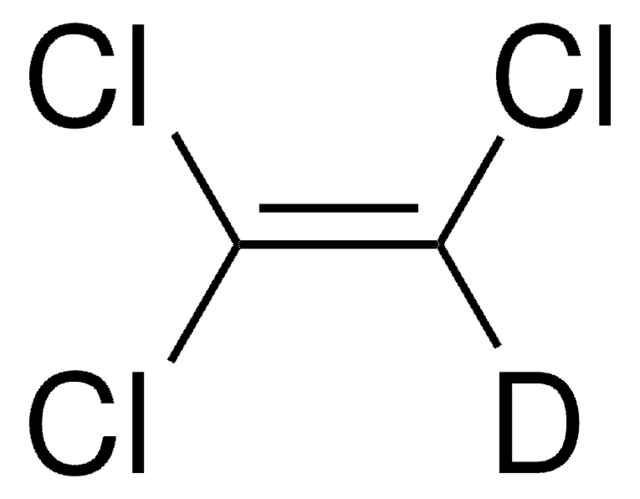1601827
USP
Residual Solvent Class 2 - Trichloroethylene
United States Pharmacopeia (USP) Reference Standard
Sinonimo/i:
Trichloroethylene solution, Trichloroethene
About This Item
Prodotti consigliati
Grado
pharmaceutical primary standard
Stato
solution
Produttore/marchio commerciale
USP
applicazioni
pharmaceutical (small molecule)
Formato
single component solution
Stringa SMILE
ClC(=CCl)Cl
InChI
1S/C2HCl3/c3-1-2(4)5/h1H
XSTXAVWGXDQKEL-UHFFFAOYSA-N
Cerchi prodotti simili? Visita Guida al confronto tra prodotti
Descrizione generale
Applicazioni
Risultati analitici
Altre note
Prodotti correlati
Avvertenze
Danger
Indicazioni di pericolo
Consigli di prudenza
Classi di pericolo
Aquatic Chronic 3 - Carc. 1B - Eye Irrit. 2 - Muta. 2 - Skin Irrit. 2 - Skin Sens. 1 - STOT SE 3
Organi bersaglio
Central nervous system
Codice della classe di stoccaggio
6.1D - Non-combustible acute toxic Cat.3 / toxic hazardous materials or hazardous materials causing chronic effects
Classe di pericolosità dell'acqua (WGK)
WGK 3
Punto d’infiammabilità (°F)
closed cup - does not flash
Punto d’infiammabilità (°C)
closed cup - does not flash
Scegli una delle versioni più recenti:
Certificati d'analisi (COA)
It looks like we've run into a problem, but you can still download Certificates of Analysis from our Documenti section.
Se ti serve aiuto, non esitare a contattarci Servizio Clienti
Possiedi già questo prodotto?
I documenti relativi ai prodotti acquistati recentemente sono disponibili nell’Archivio dei documenti.
Il team dei nostri ricercatori vanta grande esperienza in tutte le aree della ricerca quali Life Science, scienza dei materiali, sintesi chimica, cromatografia, discipline analitiche, ecc..
Contatta l'Assistenza Tecnica.







